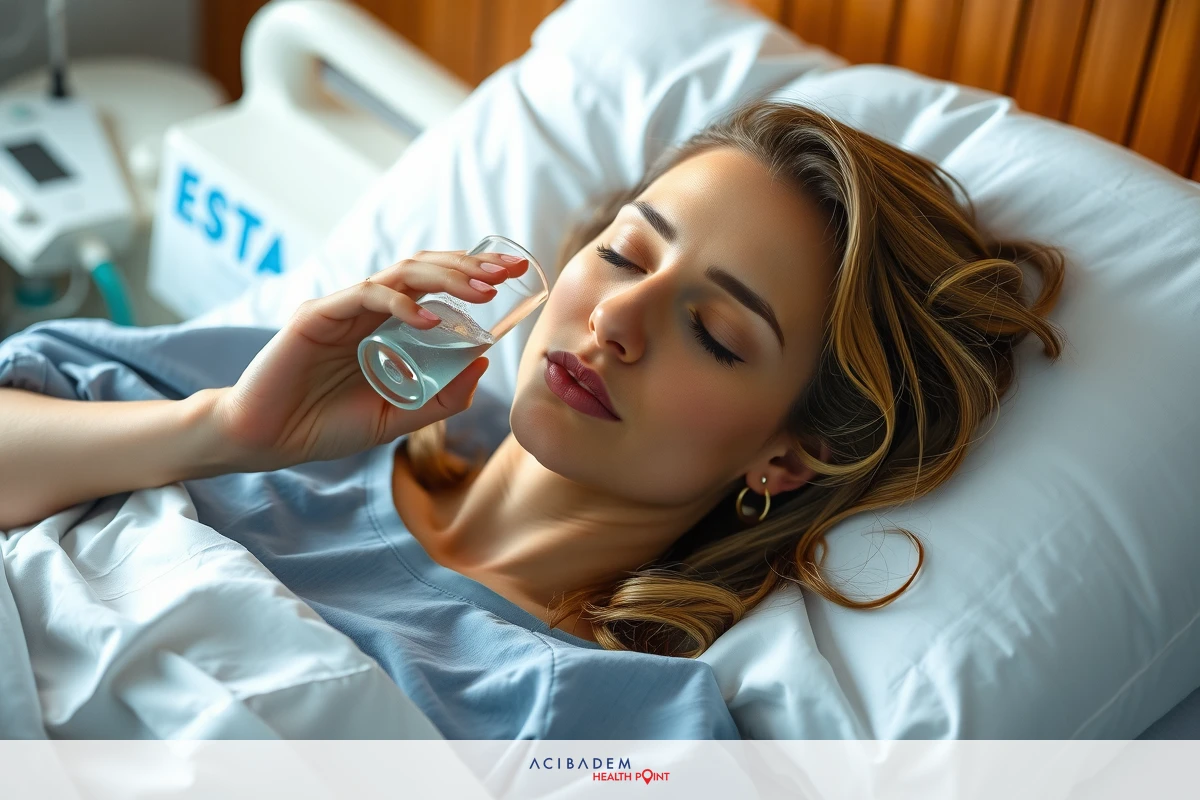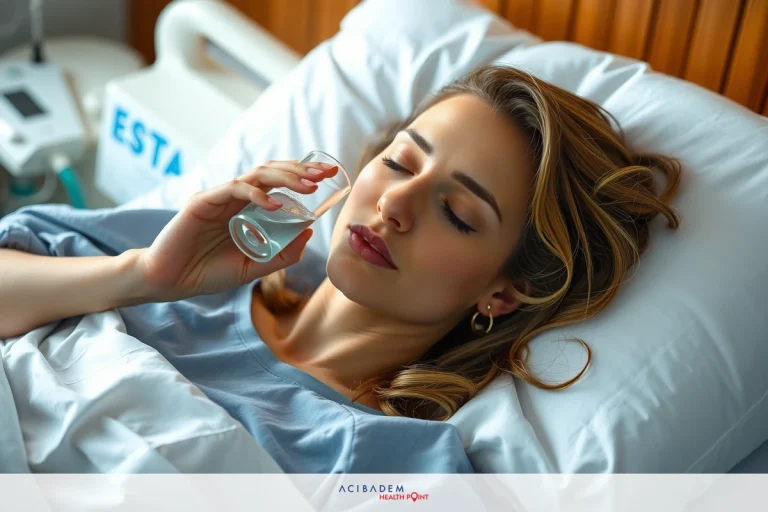When Will The Dried Blood Be Completely Gone Rhinoplasty
When Will The Dried Blood Be Completely Gone Rhinoplasty Rhinoplasty, a name that denotes nasal refinement, is a common cosmetic intervention that poses its own unique post-operative challenges. Among these hurdles to overcome in the recovery phase, one stands out – the lingering presence of dried blood. While this occurrence might seem alarming at first glance, it forms an integral part of your body’s healing mechanism.
Navigating through the convoluted journey of rhinoplasty recovery can be daunting for many patients. This guide aims to shed light on how long it usually takes for traces of dried blood to vanish completely following rhinoplasty surgery. It also provides tips on fostering optimal healing conditions and managing discomfort and swelling during this period.
Timeline for Dried Blood to Disappear
Following a rhinoplasty procedure, the presence of dried blood might be a cause for concern among patients. However, it’s important to note that this is a normal part of the healing process and typically resolves itself over time. The timeline can vary significantly depending on several factors including the patient’s overall health, adherence to post-operative care instructions and individual healing capability.
For most people who undergo rhinoplasty surgery, traces of dried blood begin disappearing within the first week after surgery. This initial phase sees a significant reduction in any visible signs of dried blood as your body initiates its natural recovery process. Despite this promising development, patients should not rush their recovery or try overly aggressive cleaning methods which could potentially delay healing or even cause harm.
By the second week post-rhinoplasty procedure, further progress will likely have been made with regards to eliminating any remaining traces of dried blood. As your body continues its diligent work on wound repair and tissue regeneration, you may notice an improvement in breathing function alongside visual changes at this stage too.
Patience becomes key during these stages since complete disappearance of all residual signs may take anywhere from two weeks up until one month following surgery under optimal conditions. Remember that every person’s healing journey is unique; hence such timelines are approximate estimates rather than definitive guarantees.
It’s essential during this period to follow all prescribed advice given by your healthcare provider regarding nasal hygiene and general care procedures designed to aid in speedy recovery while minimizing discomfort or complications. Always consult with them if you have concerns about lingering dried blood beyond what seems reasonable based on average expectations.
Staying informed about what happens throughout each phase of rhinoplasty recovery – from immediate aftermath through final resolution – enables individuals better manage their expectations while providing reassurances along an often anxiety-provoking path towards restored confidence in their appearance.
Tips for Promoting Healing
Promoting healing after a rhinoplasty procedure is more than just waiting for time to pass; it’s an active process that requires commitment and diligence. The path to recovery involves understanding your body, recognizing its signals, and responding appropriately. Here are some specific tips aimed at facilitating the
healing process post-rhinoplasty.
- Balanced Nutrition: Ensuring you consume a diet rich in protein, vitamins, and minerals can help speed up

The image shows a woman lying in a hospital bed. She is holding a clear plastic cup near her mouth and appears to be in pain. Her eyes are closed, suggesting she might be resting or asleep. wound healing.
- Hydrate Regularly: Keeping yourself hydrated aids in maintaining healthy skin tissue around the nose.
- Avoid Strenuous Activities: High impact exercises may increase blood pressure leading to bleeding or swelling which could prolong the recovery period.
- Stop Smoking: Because nicotine constricts blood vessels thereby slowing down the healing process it’s advised that you abstain from smoking before and after surgery until fully healed.
- Sleep with Your Head Elevated: This helps reduce swelling during sleep when our bodies undergo repair processes most actively.
- Adhere Strictly to Medication Regimen: Following your prescribed medication schedule ensures control of pain inflammation while speeding up recovery times too!
- Avoid Sun Exposure: Sunlight can cause irritation delay wound healing so try stay out direct sun long possible especially initial weeks after surgery
These guidelines offer general advice but always remember that individual needs vary greatly depending on personal health status surgical specifics among other factors hence consult with your healthcare provider for personalized recommendations based on their expert assessment of your unique case.
By following these tips diligently one can promote speedy efficient recovery ensuring minimal complications along way!
When Will The Dried Blood Be Completely Gone Rhinoplasty: Managing Discomfort and Swelling
Postoperative discomfort and swelling stand as common companions in the recovery journey following rhinoplasty. The management of these symptoms plays a crucial role in ensuring a smooth, more comfortable healing process. Implementing effective strategies can help alleviate these concerns, facilitating successful recuperation while fostering improved well-being.
The initial days after surgery often present heightened levels of discomfort due to the body’s reaction to surgical trauma. It is during this period that pain relief becomes paramount for patients. Over-the-counter analgesics or prescription medications provided by your healthcare provider serve as primary tools in managing this aspect of recovery. However, it’s essential not to exceed prescribed dosages or use non- recommended drugs which could potentially interfere with the healing process.
Swelling too forms part of the body’s natural response mechanism post-surgery; an attempt at protecting itself against further injury while initiating repair work on affected tissues. This results in fluid accumulation around the nasal area leading to temporary changes in appearance alongside potential breathing difficulties. Elevating your head when sleeping, applying cold compresses regularly (as directed) and maintaining adequate hydration are often recommended strategies for managing swelling effectively.
As one navigates through different stages of rhinoplasty recovery, fluctuations occur within levels of experienced discomfort and visible swelling. In general terms though, both should gradually diminish over time eventually resolving completely once full healing has been achieved – typically around one year post- surgery under optimal conditions.
Frequently Asked Questions
How long does it typically take for dried blood to completely disappear after rhinoplasty?
The timeline varies widely among individuals but generally, most patients notice significant reduction within the first week post-surgery. Complete disappearance of all traces often takes between two weeks and one month under optimal conditions.
What can I do to promote quicker healing following my rhinoplasty procedure?
Various strategies can aid recovery including maintaining good nutrition and hydration levels, avoiding strenuous activities and sun exposure, adhering strictly to medication regimen as prescribed by your healthcare provider, and practicing proper nasal hygiene.
Is there a way to manage discomfort without relying heavily on pain medications?
While analgesics remain key in managing acute postoperative pain, other techniques such as cold compresses or distraction methods (like reading or watching TV) may offer additional relief. Always consult with your doctor about any concerns regarding medication use.
My swelling doesn't seem to be reducing significantly several days into the recovery period - should I be worried?
Post-rhinoplasty swelling tends to peak around day two or three before gradually subsiding over time. However, individual experiences vary greatly hence if you have concerns about persistent severe swelling please contact your healthcare professional promptly for personalized advice based on their expert assessment of your unique case.











